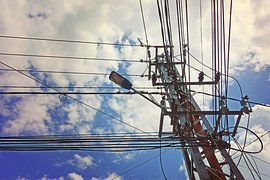Batteries may just be the next big thing in energy efficiency. Large-scale battery-powered storage devices are poised to reduce the cost of energy transmittance to customers for utilities. This system is being called behind-the-meter energy storage deployments. For a long time, the energy supply system was based on power generation through power plants and delivery infrastructure. Energy storage companies have been experimenting with battery-powered storage options, but the cost to implement such a system would be an economically unsound decision for utility companies. Until now. Emerging technologies have placed us on the brink unveiling a cost-effective roll out of battery-powered storage solutions. These new systems would lessen utility dependence on power plants and the overall demand needed by consumers, effectively lowering costs for utility companies, and in turn, for consumers. We will look at how electricity (kWh) and demand (kW) is consumed, explain how reductions to both could mean significant savings, and take a look at the 5-year growth projection for behind-the-meter storage deployment.
Energy (kWh) Consumption
Utilities read your kWh meters—the total amount of energy you consume—every month, and bill you based on your total energy consumption. Each state has different prices for energy consumption, but New England, on average, invests more in energy costs than the rest of the country. According to the U.S. Energy Information Administration (EIA), the average retail price is 9.84 cents/kWh. However, in New England, including Massachusetts, New Hampshire, New York, Rhode Island, and Connecticut, the electricity rates per kilowatt hour are 13.80, 14.20, 15.20, 12.70, and 15.50 cents/kWh, respectively.

Demand (kW)
Demand (kW) is the total amount of energy needed at any given time. To simplify, if a business turned on all of its electrical equipment at once, the demand level would spike. Think of demand like the speedometer on your car. Your car has the capability of reaching a certain speed, and the utilities want to ensure they have enough capacity to handle your desire to achieve that speed at any given time. Depending on your electrical demand requirements, utilities charge fees based on a tiered system, increasing the price for customers with higher demand requirements.
Cost Effective Significance of Energy Storage Deployment
The main question is, how does this new technology help us save money? Matt Roberts, executive director of the Energy Storage Association, said in a recent Forbes article, “energy storage devices not only relieve the stress on the grid, they lead to much greater efficiency . . . . Peak demand would no longer require utility companies [to] crank up the turbines as energy would already be available on demand for immediate use.” Furthermore, another Forbes article notes, “Batteries can be charged at night and discharged during peak hours to reduce system load and facility demand charges—allowing utilities to reduce their cost of service while minimizing customer electricity bills.” Increased energy efficiency measures and reduced overall demand is a win-win for both the utility and customer.
Energy Storage Growth Projections
Growth projections for energy storage devices are promising. According to a new article in the Christian Science Monitor, the market for energy storage is expected to grow from “$128 million last year to $1.5 billion by 2019 . . . .” The article notes most of growth came within 2014’s 4th quarter, primarily in the non-residential sector. With that in mind, most analysts expect 2015 to be a “breakout year for behind-the-meter storage.”


Picture sources: Greentech Media
Final Thoughts
Based on what we’re seeing, energy storage presents itself as the next phenomena to take over the way in which we receive energy. This past winter, we were all hit hard with electric rate hikes from utility companies, and based on 5-year projections, there were few solutions in sight. With new growth patterns emerging from behind-the-meter storage, however, we may have finally found our answer.




